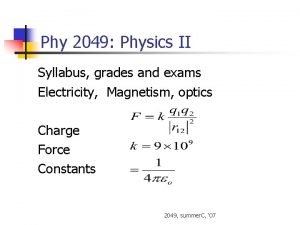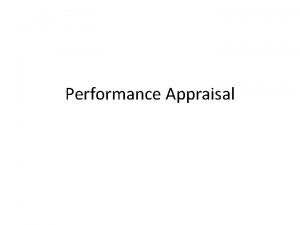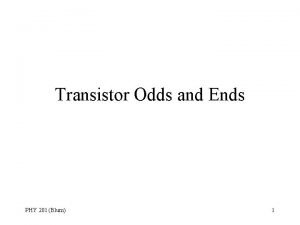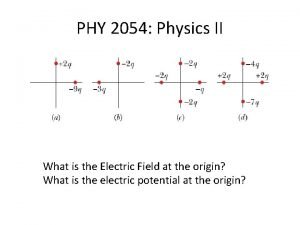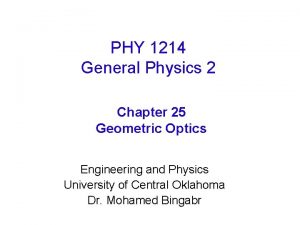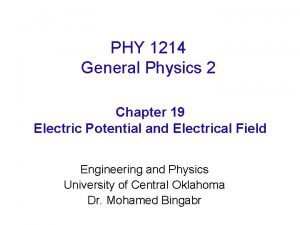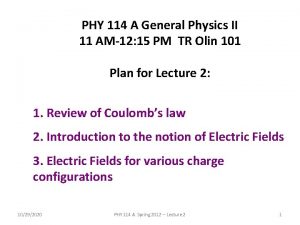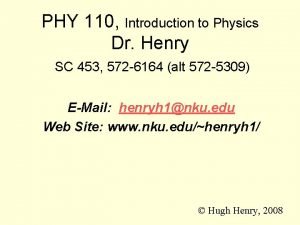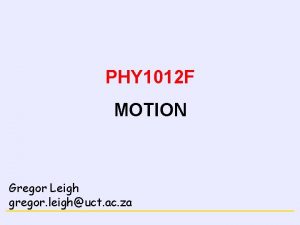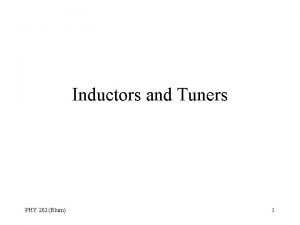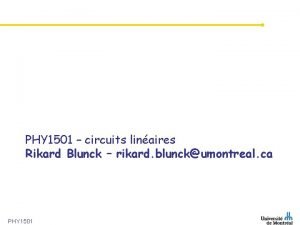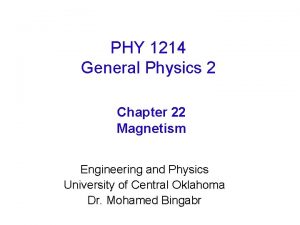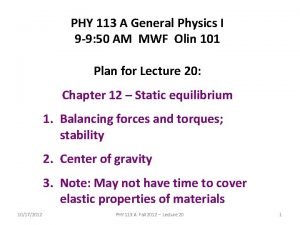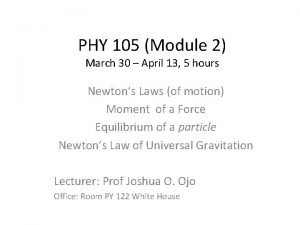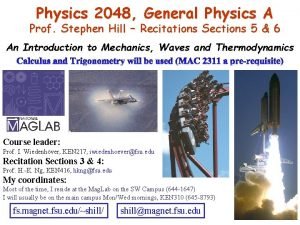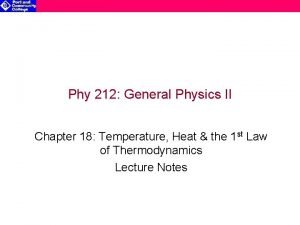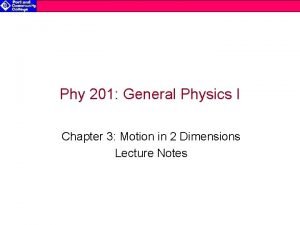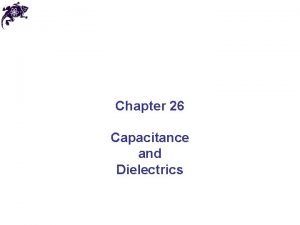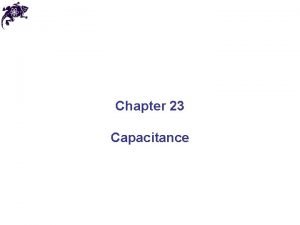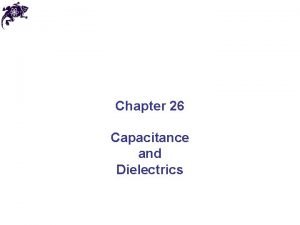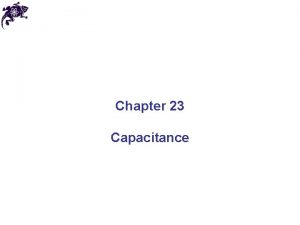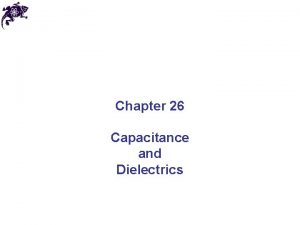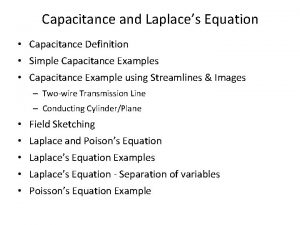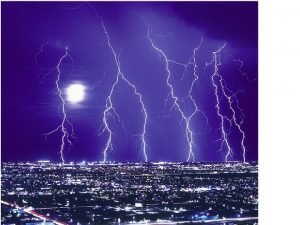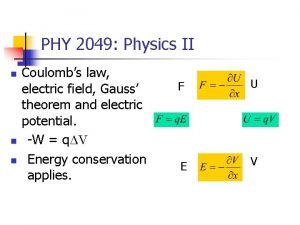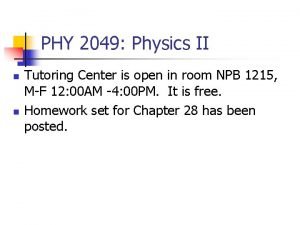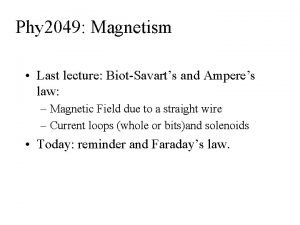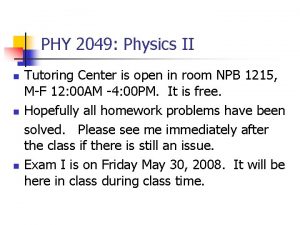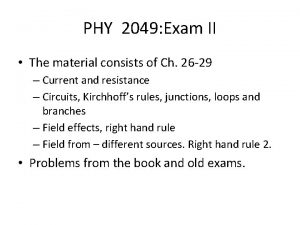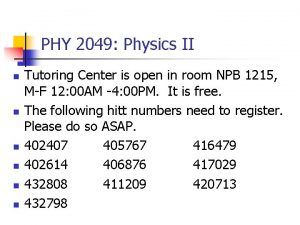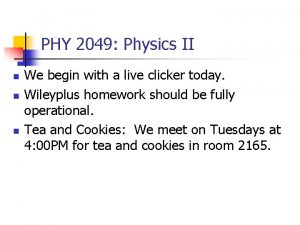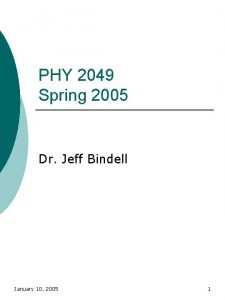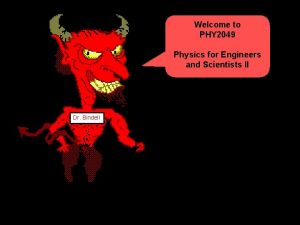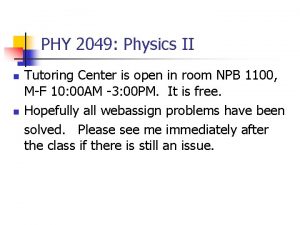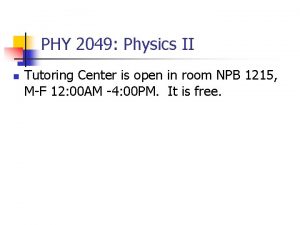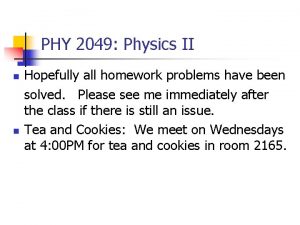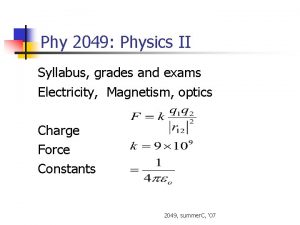Capacitance PHY 2049 Chapter 25 Chapter 25 Capacitance
































- Slides: 32

Capacitance PHY 2049 Chapter 25

Chapter 25 Capacitance In this chapter we will cover the following topics: -Capacitance C of a system of two isolated conductors. -Calculation of the capacitance for some simple geometries. -Methods of connecting capacitors (in series , in parallel). -Equivalent capacitance. -Energy stored in a capacitor. -Behavior of an insulator (a. k. a. dielectric) when placed in the electric field created in the space between the plates of a capacitor. -Gauss’ law in the presence of dielectrics. (25 - 1)

Capacitors

Capacitor o Composed of two metal plates. o Each plate is charged n one positive n one negative o Stores energy SYMBOL

A simple Capacitor TWO PLATES WIRES Battery

INSIDE THE DEVICE

What is STORED in the capacitor? o o o An Electric Field Energy Charge All three None of these

Two Charged Plates (Neglect Fringing Fields) d Air or Vacuum E -Q Area A V=Potential Difference +Q Symbol ADDED CHARGE

Where is the charge? - Q- d Air or Vacuum E Area A V=Potential Difference + + + +Q AREA=A s=Q/A

One Way to Charge: o Start with two isolated uncharged plates. o Take electrons and move them from the + to the – plate through the region between. o As the charge builds up, an electric field forms between the plates. o You therefore have to do work against the field as you continue to move charge from one plate to another.

Capacitor

More on Capacitors d Air or Vacuum -Q E +Q Area A Gaussian Surface V=Potential Difference Same result from other plate!

DEFINITION - Capacity o The Potential Difference is APPLIED by a battery or a circuit. o The charge q on the capacitor is found to be proportional to the applied voltage. o The proportionality constant is C and is referred to as the CAPACITANCE of the device.

UNITS o A capacitor which acquires a charge of 1 coulomb on each plate with the application of one volt is defined to have a capacitance of 1 FARAD o One Farad is one Coulomb/Volt

Continuing… o The capacitance of a parallel plate capacitor depends only on the Area and separation between the plates. o C is dependent only on the geometry of the device!

After the switch is closed, how much charge passed through the capacitor? V o o C/V V/C CV C+V

P S N (25 - 6)

Units of e 0 pico

Simple Capacitor Circuits o Batteries n Apply potential differences o Capacitors o Wires n Wires are METALS. n Continuous strands of wire all at the same potential. n Separate strands of wire connected to circuit elements may be at DIFFERENT potentials.

NOTE o Work to move a charge from one side of a capacitor to the other is = q. Ed. o Work to move a charge from one side of a capacitor to the other is q. V o Thus q. V = q. Ed o E=V/d As before

TWO Types of Connections SERIES PARALLEL

Parallel Connection V CEquivalent=CE

Series Connection q V -q C 1 q -q C 2 The charge on each capacitor is the same !

Series Connection Continued q V C 1 -q q -q C 2

More General

Example C 1 C 2 (12+5. 3)pf V series C 3 C 1=12. 0 uf C 2= 5. 3 uf C 3= 4. 5 ud

More on the Big C E=e 0 A/d +dq +q -q o We move a charge dq from the (-) plate to the (+) one. o The (-) plate becomes more (-) o The (+) plate becomes more (+). o d. W=Fd=dq x E x d


Not All Capacitors are Created Equal o Parallel Plate o Cylindrical o Spherical

Spherical Capacitor

Calculate Potential Difference V (-) sign because E and ds are in OPPOSITE directions.

Continuing… Lost (-) sign due to switch of limits.
 Phy 2049
Phy 2049 Phy 2049
Phy 2049 Objectives of performance appraisal
Objectives of performance appraisal Phy 131 past papers
Phy 131 past papers Pa msu
Pa msu Great orthogonality theorem proof
Great orthogonality theorem proof Phy 221 msu
Phy 221 msu Phy theorem
Phy theorem Phy113
Phy113 Phy 121 asu
Phy 121 asu Ddr phy architecture
Ddr phy architecture Phy 205
Phy 205 Accommodation eye
Accommodation eye Phy
Phy Phy
Phy Phy
Phy Atm basics
Atm basics Fizik ii
Fizik ii Phy 1214
Phy 1214 Phy 1214
Phy 1214 Phy
Phy Law of motion
Law of motion Phy
Phy Felix connects a wire coil to an ammeter
Felix connects a wire coil to an ammeter Life phy
Life phy Phy1501
Phy1501 General physics
General physics 2012 phy
2012 phy Phy-105 5 discussion
Phy-105 5 discussion Phy 2048c fsu
Phy 2048c fsu Physics heat and temperature
Physics heat and temperature Phy 1214
Phy 1214 Vx=vox+axt
Vx=vox+axt

